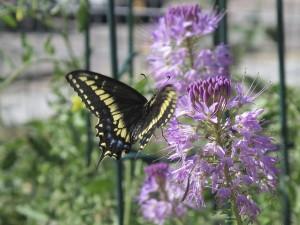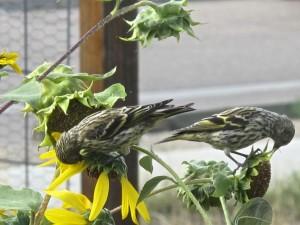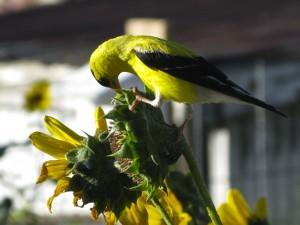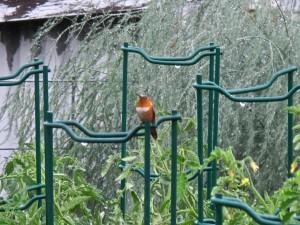In our opening post on "wildscaping basics," we covered what wildscaping is and why it matters in giving homes and food to wildlife--especially songbirds and pollinators. We also talked about the five basic principles of creating a wildscape:
- Create diverse layers and shelter
- Grow natural food
- Provide water for drinking and bathing
- Control invasive species
- Conserve: water, energy and chemicals
That post explained how to create diverse layers and shelter. This one introduces the idea of growing natural food for your songbird and pollinator "neighbors."
Growing Food Versus Using Feeders
Many of us put out feeders, including seed and suet feeders in winter and hummingbird feeders in summer. Providing this kind of supplemental food is fine as long as you keep the food fresh and the feeders clean (wash them in spring and fall with a mild bleach solution) and you don't have so many feeders that you attract crowds, which can spread disease and attract predators.
Growing natural food is an example of the truth of the parable that giving a person a fish feeds them for a day, but teaching them to fish feeds them for a lifetime. Planting food not only feeds your favorite birds and pollinators at different seasons, those plants also provide other aspects of healthy habitat: cover, nesting areas, materials for building nests and habitat for the insects that birds and other pollinators eat for protein.
Grow seed- or nectar-producing plants, and you're providing more than just a meal for the moment; you're restoring habitat for a lifetime and providing a life-line.
What Food Should I Grow?
To know what to grow, you'll need to have an idea of what kinds of wildlife you might expect to find in your yard, and at what times of the year. Take American goldfinches. These bright yellow and black "wild canaries" with the characteristic chiming calls migrate into the Rockies in early summer to nest and raise young. (Males are easy to spot, females, which spend more time incubating eggs and tending young, are more olive than yellow in order to blend in and not attract predators to the nest.)
SeedEaters
Goldfinches' stout bills mark them as seed-eaters, and they search out seeds on native plants like Indian Ricegrass (Achnatherum hymenodies), and early blooming Sunflower Family flowers including Blanketflower (Gaillardia aristata). Later in the summer and early fall, they perch on Mexican Hat (Ratibida columifera) and annual Sunflowers (Helianthus annuus) to pry out the oil-rich, nutritious seeds.
Without these plants, you may never seen goldfinches in your yard--even if you have feeders. Plant them though, and these songsters will flock in, and stay until the seeds are gone or the hard frosts send the birds south for the winter.
Berry-Eaters
Other birds like Cedar Waxwings migrate in from farther north at that time. These berry-eaters and will swarm over species that grow nutritious berries and berry-sized fruit, including trees like Mountain Ash (Sorbus scopulina) or Crapapple (Malus X) and shrubs like Elderberry (Sambucus canadensis), Serviceberry (Amelanchier alnifolia), or New Mexico Privet (Forestiera neomexicana)
Nectar-Feeders
Hummingbirds and many butterflies (in their adult stage) feed on flower nectar through the summer. Plant nectar-bearing flowers with narrow, red tubes like Scarlet Bugler Penstemon (Penstemon barbatus) and Hummingbird Mints (Agastaches). Butterflies hone in on yellow, orange and purple to pink flowers. (The previous post explains which colors birds and insects are attracted to, and why.)
For more information on nutritious plants for wildlife, see "Turn Your Yard into a Winter Refueling Spot for Birds" and Colorado Wildscapes, Bringing Conservation Home (this full-color book on wildscaping for the Rocky Mountain region is available for a small donation to Audubon Rockies).
By Habitat Hero
Stay in the Know
Sign up for emails to stay up to date on how you can help and enjoy birds in Colorado, Wyoming, and Utah.








